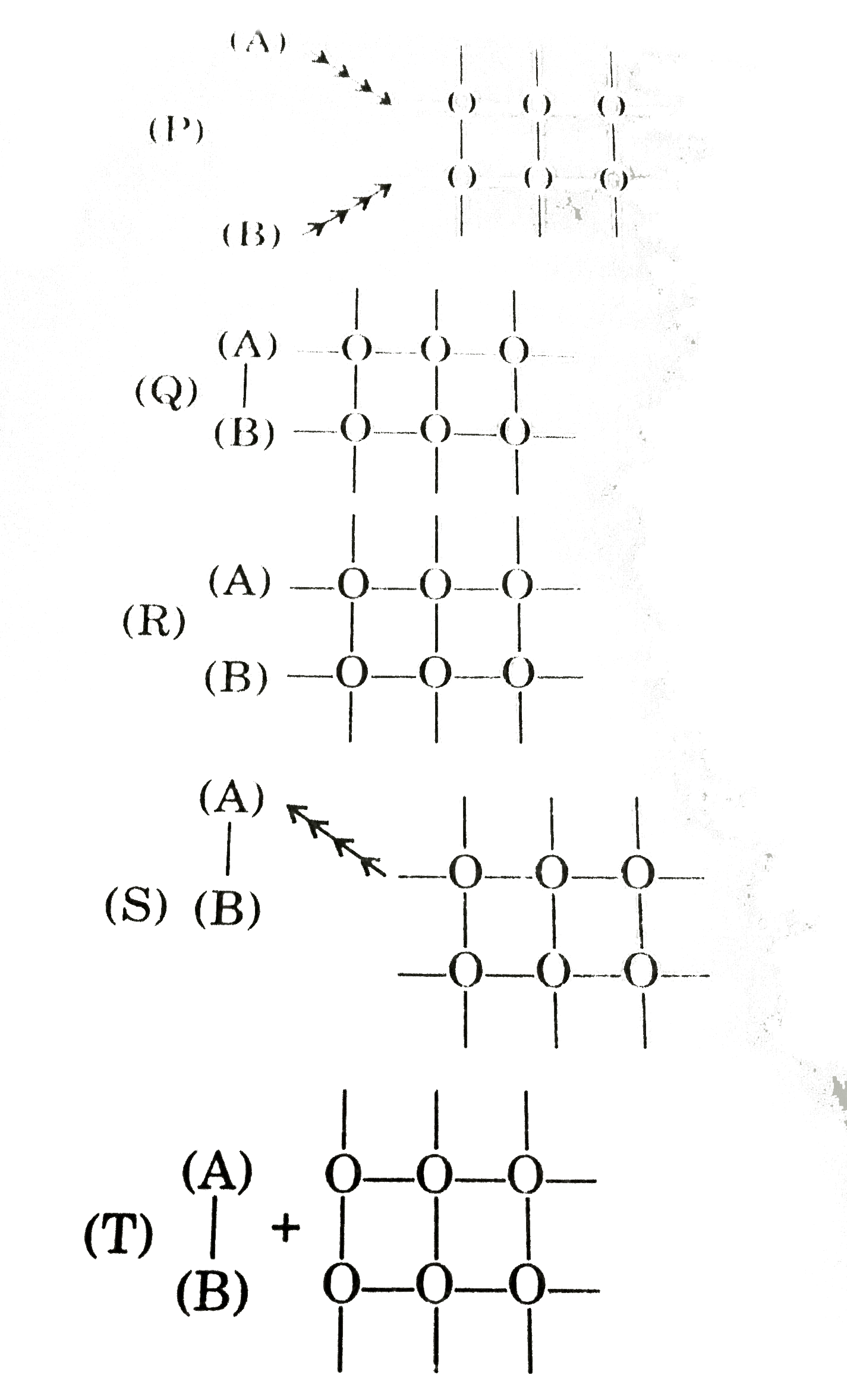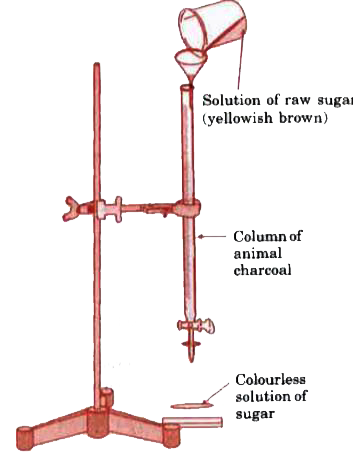Complete Solutions to NCERT FILE (SOLVED) (NCERT EXEMPLAR PROBLEMS )(MULTIPLE CHOICE QUESTION (TYPE-I)) of chapter SURFACE CHEMISTRY of Class 12 book with complete answers and questions
| Class 12 | CHEMISTRY |
| Chapter | SURFACE CHEMISTRY |
| MODERN PUBLICATION | NCERT FILE (SOLVED) (NCERT EXEMPLAR PROBLEMS )(MULTIPLE CHOICE QUESTION (TYPE-I)) |
| Number Of Questions | 25 |
| Academic Year | 2023-24 |
Which of the folowing process does not occur at the interface of phases?
View SolutionAt the equilibrium position in the process of adsorption …………
View SolutionWhich of the following interface cannot be obtained?
View SolutionThe term 'sorption' stands for ……… .
View SolutionExtent of physisorption of a gas increases with ………. .
View SolutionExtent of adsorption of adsorbate from solution phase increases with …… .
View SolutionWhich one of the following is not applicable to the phenomenon of adsorption?
View SolutionWhich of the following is not a favourable condition for physical adsorption?
View SolutionPhysical adsorption of a gaseous species may change to chemical adsorption with
View SolutionIn physisorption adsorbent does not show specificity for any particular gas because ……. .
View SolutionWhich of the following is an example of absorption?
View SolutionOn the basis of data given below predict which of the following gases shows least adsorption on a definite amount of charcoal?
`{:("Gas" ,,CO_(2),,SO_(2),,CH_(4),,H_(2)),("Critical temp./K",,304,,630,,190,,33):}`
View SolutionIn which of the following reactions heterogeneous catalysis is involved?
(i) `2SO_(2)(g)+O_(2)(g) overset(NO(g))(to) 2SO_(3)(g)`
(ii) `2SO_(2)(g) overset(Pt(s))(to) 2SO_(3)(g)`
(iii) `N_(2)(g)+3H_(2)(g) overset(Fe(s))(to) 2NH_(3)(g)`
(iv) `CH_(3)COOCH_(3)(l)+H_(2)O(l) overset(HCl(l))(to)CH_(3)COOH(aq)+CH_(3)OH(aq)`
View SolutionAt high concentration of soap in water, soap behaves as …… .
View SolutionWhich of the following will show Tyndall effect?
View SolutionWrite a method by which lyophobic colloids can be coagulated.
View SolutionBy which method precipitate is converted into colloids?
View SolutionWhich of the following electrolytes will have maximum coagulating value for `Ag//Ag^(+)` sol?
View SolutionA colloidal system having a solid substance as a dispersed phase and a liquid as a dispersion medium is classified as ……. .
View SolutionThe values of colligative properties of colloidal solution are of small order in comparison to those shown by true solutions of same concentration because of colloidal particles …… .
View SolutionArrange the following diagrams in correct sequence of steps involved in the mechanism of catalysis, in accordance with modern adsorption theory.

View SolutionWhich of the following process is responsible for the formation of delta at a place where rivers meet the sea?
View SolutionWhich of the following curves is in accordance with Freundlich adsorption isotherm ?
View SolutionWhich of the following process is not responsible for the presence of electric charge on the sol particles?
View SolutionWhich of the following phenomenon is applicable to the process shows in the figure ?

View Solution
NCERT FILE (SOLVED) (NCERT EXEMPLAR PROBLEMS )(MULTIPLE CHOICE QUESTION (TYPE-I)) questions and complete solutions for chapter SURFACE CHEMISTRY of MODERN PUBLISHERS CHEMISTRY (HINGLISH) of Class 12
All Exercises from MODERN PUBLICATION Class 12 CHEMISTRY SURFACE CHEMISTRY
- COMPETITION FILE (OBJECTIVE TYPE QUESTIONS) (A. MULTIPLE CHOICE QUESTIONS WITH ONLY ONE CORRECT ANSWER)
- COMPETITION FILE (OBJECTIVE TYPE QUESTIONS) (B. MULTIPLE CHOCE QUESTIONS FROM COMPETITIVE EXAMINATIONS)
- COMPETITION FILE (OBJECTIVE TYPE QUESTIONS) (C. MULTIPLE CHOICE QUESTIONS WITH MORE THANONE CORRECT ANSWERS)
- COMPETITION FILE (OBJECTIVE TYPE QUESTIONS) (D. MULTIPLE CHOICE QUESTIONS BASED ON THE GIVEN PASSAGE/COMPREHENSION)
- COMPETITION FILE (OBJECTIVE TYPE QUESTIONS) (MATCHING LIST TYPE QUESTIONS)
- COMPETITION FILE (OBJECTIVE TYPE QUESTIONS) (MATRIX MATCH TYPE QUESTIONS)
- CONCEPTUAL QUESTION 1
- CONCEPTUAL QUESTION 2
- HIGHER ORDER THINKING SKILLS
- NCERT FILE (SOLVED) (NCERT IN-TEXT QUESTIONS)
- NCERT FILE (SOLVED) (NCERT TEXTBOOK EXERCISES )
- NCERT FILE (SOLVED) (NCERT EXEMPLAR PROBLEMS )(MULTIPLE CHOICE QUESTION (TYPE-I))
- NCERT FILE (SOLVED) (NCERT EXEMPLAR PROBLEMS) (ASSERTION AND REASON TYPE QUESTIONS)
- NCERT FILE (SOLVED) (NCERT EXEMPLAR PROBLEMS) (MATCHING TYPE QUESTIONS )
- NCERT FILE (SOLVED) (NCERT EXEMPLAR PROBLEMS) (MULTIPLE COICE QUESTIONS (TYPE-II))
- NCERT FILE (SOLVED) (NCERT EXEMPLAR PROBLEMS) (SHORT ANSWER TYPE QUESTIONS)
- QUICK MEMORY TEST (A. SAY TRUE OR FALSE)
- QUICK MEMORY TEST (B. COMPLETE THE MISSING LINKS)
- QUICK MEMORY TEST (C. CHOOSE THE CORRECT ALTERNATIVE)
- REVISION EXERCISE (ASSERTION REASON QUESTIONS )
- REVISION EXERCISE (LONG ANSWER QUESTIONS )
- REVISION EXERCISE (OBJECTIVE QUESTIONS) (MULTIPLE CHOICE QUESTIONS)
- REVISION EXERCISE (PASSAGE BASED QUESTIONS)
- REVISION EXERCISE (SHORT ANSWER QUESTION)
- REVISION EXERCISE (VERY SHORT ANSWER QUESTIONS )
- SOLVED EXAMPLES